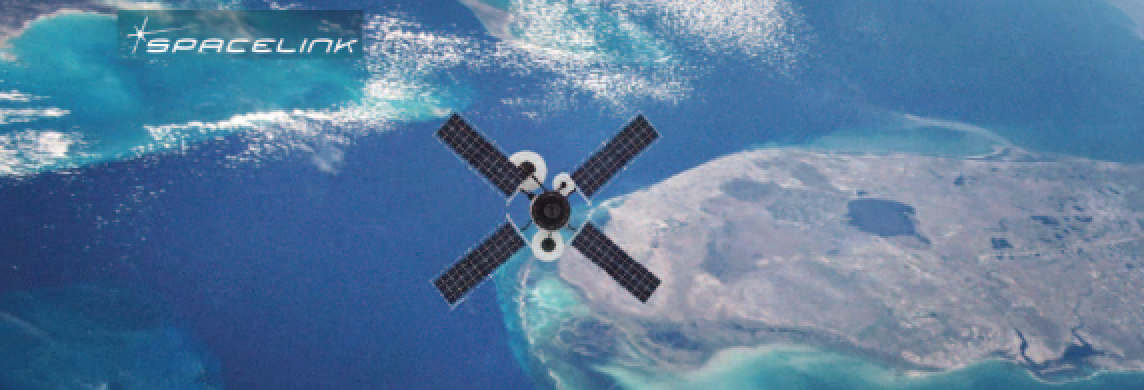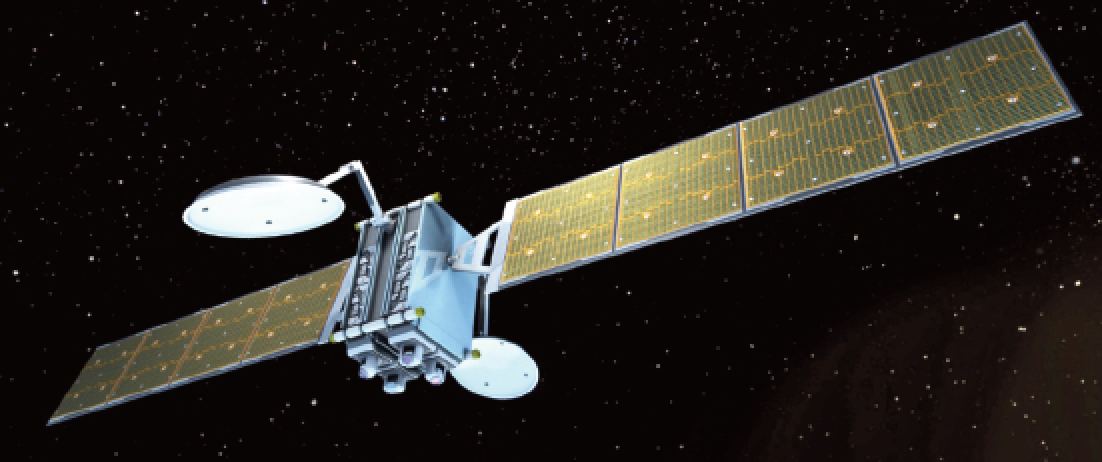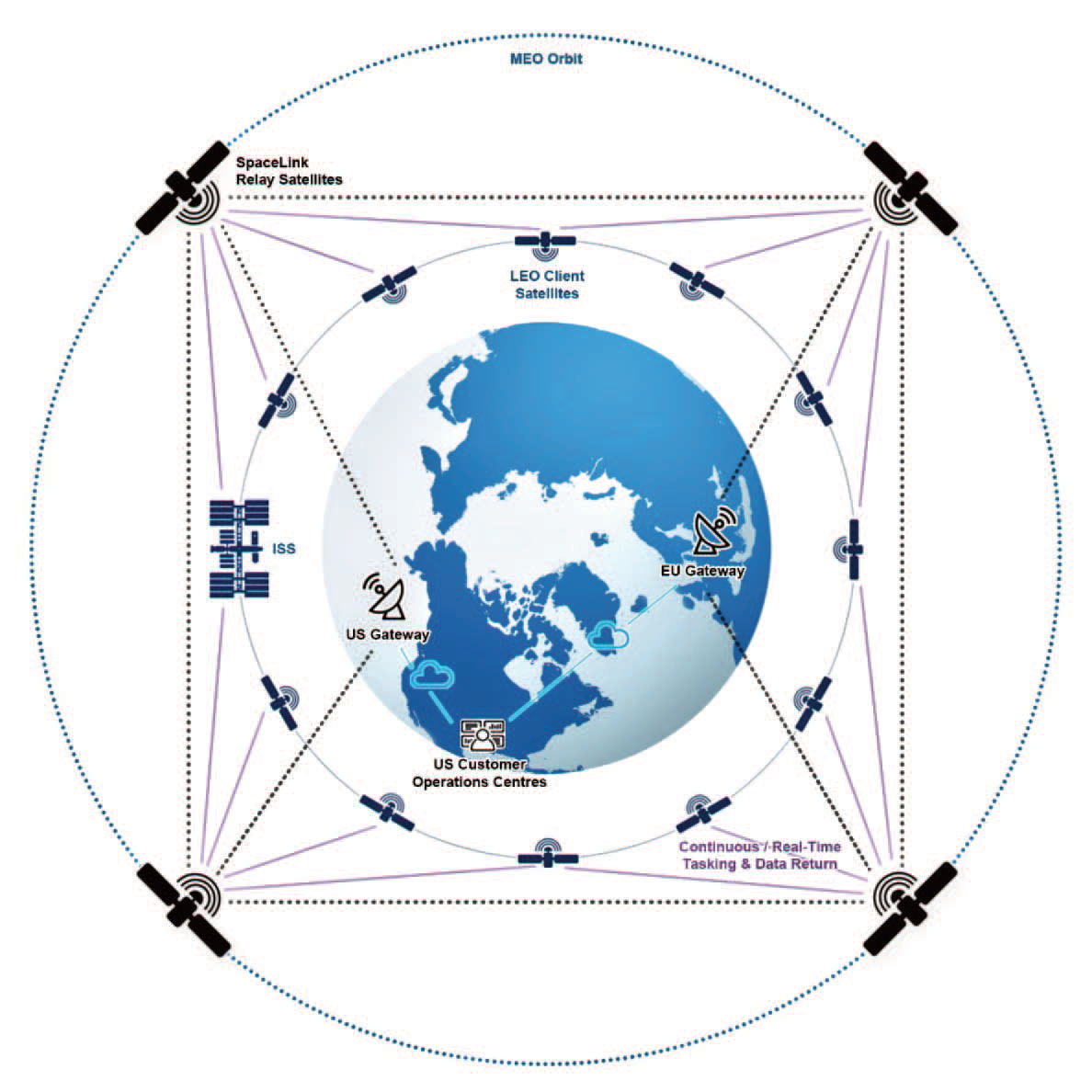A business and technology visionary, Dave Bettinger has 30 years’ experience in innovative satellite communications. His expertise includes digitally regenerative satellite payloads, optical intersatellite links, electronically steered phased array antennas, and network architectures. Previously the Vice President of Comms Systems & Development at OneWeb and the Chief Technical Officer at iDirect, David’s career began at Hughes Network Systems. With BS and MS degrees in Electrical Engineering from Virginia Tech, he has authored more than 50 technical papers and holds seven satellite communications patents.
Good day, Mr. Bettinger… we appreciate you taking the time to talk with us about SpaceLink and your plans for today and tomorrow. Can you tell us why you joined SpaceLink and what your goals are for the company?

David Bettinger (DB)
My interest has always been in implementing innovative technologies and transforming startup ventures into a competitive position. I helped grow iDirect from a start up to become the largest TDMA enterprise VSAT manufacturer in the world and I was responsible for the technology roadmap for OneWeb from its inception.
SpaceLink is extremely well positioned for success. We are leveraging a broad spectrum of advances to address an underserved market. SpaceLink has strong financial backing, significant bandwidth, and a roadmap to benefit from advanced optical communications technology from our parent company, Electro Optic Systems (EOS), to unlock massively scalable capacity for communications in LEO.
What services is SpaceLink planning to offer?

DB
We are building a satellite relay system that will make it easier for operators of LEO spacecraft to send and receive real time data between their satellites and the ground.
The SpaceLink relay network is designed to pick up where TDRSS leaves off and go beyond with unprecedented capacity that leverages today’s technology advances. It helps close the business case for Earth observation companies, commercial space stations, satellite servicers and tugs, and meets requirements for the U.S. government and close allies that need to leverage industry solutions to maximize capabilities.
Typically, a LEO satellite collecting imagery or sensor data can only download that data when directly over a ground station, which might only be once a day or at most once per orbit.
With SpaceLink, satellites and other spacecraft can continuously connect to one of our relay satellites, which always have direct line of sight to one of our dedicated gateways, so there is always a communication path to deliver data and imagery to the ground where it can immediately be delivered via the Internet, private cloud, or other secure links.
Because of SpaceLink’s innovative constellation in MEO, any satellite in LEO is essentially always in direct line of sight of one of the SpaceLink satellites, which can then relay signals between the LEO and our dedicated gateway Earth stations, all in a fraction of a second.
Imagine a satellite over the Pacific Ocean that has data on illegal fishing or spots the site of a plane crash — with SpaceLink, the satellite operator can access the data or send it to the appropriate authorities with the immediacy that could make the difference between life and death.

Is your service only for Earth Observation companies? The capabilities certainly seem appropriate for both the commercial and military/agency/government — what we like to call MAG — market segments as well.
DB
We see the need for our service for both commercial and government operators of space assets who need continuous relay of data and communications to and from those assets. We'll provide high-speed, highly secure, always available relay for those users. As the in-space economy grows, there is a broadening need for communications in near Earth orbit.
The SpaceLink system also helps make the economics work for emerging applications such as human spaceflight, on-orbit manufacturing, and satellite servicing in space. It will serve visitors to commercial space stations who need continuous communication capability, and it will connect satellite tugs or servicers which can use the SpaceLink network to provide a video link and continuously receive maneuvering instructions.
SpaceLink meets the requirements of the U.S. government and close allies who are looking for a commercial solution to rely on as TDRSS phases out. The system is designed to provide continuous, high capacity, low latency connectivity in space. With the increase in video content and ultra-high-definition imagery, demand for the secure capacity that SpaceLink provides will only continue to grow.
We expect to see growing demand for continuous communications for human spaceflight. As commercial space stations begin operating on orbit, they will need always-on connectivity with the ground. This will be for operational data, scientific research output, and for personal communications for the crew. Today’s in-space infrastructure simply cannot support the capacity that will be required.
I should add that SpaceLink is implementing a company- and network-wide security plan to ensure compliance with high-level government physical and cybersecurity requirements.

The SpaceLink relay constellation operates in MEO
You have announced that you’ve hired a “dream team” of top executives with some of the top talent in the industry. Why does SpaceLink attract such a high caliber team?
DB
I’m extremely proud of the team we have built. Some of the best experts in the industry have been attracted to our business model, and the opportunity to drive forward a game-changing satellite relay service. They share my excitement for starting with a clean slate and building a networked system that will help advance humanity to a new age of space commerce, exploration, environmental awareness, and security.
We are continuing to build out our team and we’re recruiting across a range of talent including satellite and network engineering, ground infrastructure, RF and optical terminals, and business functions. It’s an extremely collaborative team that shares a passion for innovating and taking on tough challenges.
Could you tell us about your team members and what sort of expertise they bring to the company?
DB
There are three important components to the system and we have some of the foremost experts in each. These include the spacecraft, the network and the ground system. However, equally important, is our business plan and the team’s experience in generating long term ROI.
We are very lucky to have Rob Singh on board as CTO. Rob specializes in innovative satellite communications solutions and their integration into existing and emerging networks. He was previously VP of Strategy Initiatives and Chief Architect at Maxar Technologies, where he developed business strategy and technology roadmaps for disruptive solutions.
Tony Colucci is our Chief Strategy and Commercial Officer and Larry Rubin is Chief Operating Officer. Together they were instrumental in establishing the company’s vision.
Tony is a global business strategy executive with more than 35 years’ experience in satellites and space. He has held key leadership roles in two international satellite start-ups and was previously VP of Business Development at Space Systems Loral and Deputy Chair of KACOMM, responsible for Loral’s equity investment. He also held senior posts at Hughes, now Boeing, and Rockwell International.
Larry is a highly experienced program management and operations executive with more than 35 years in the space industry. He spent a couple of decades at Space Systems Loral where he directed more than 20 innovative spacecraft programs, and before that he directed Commercial Systems Engineering at Hughes, now Boeing.
We’re also thrilled to have Larry Alder as our Senior Vice President of Products and Services. Larry brings a unique combination of technical and business acumen to the company. He spent more than a decade at Google, focused on global internet access and he was a member of the board of directors of O3b Networks until it was acquired by SES in 2016. I previously worked with Larry when he was Chief Operating Officer at OneWeb. Larry brings deep domain expertise in internet technologies, systems and software, signal processing, networking, broadband, space systems, and spectrum which are all key to SpaceLink’s success.

SpaceLink’s Executive Team, from left to right: Rob Singh, Tony Colucci, Larry Rubin and Dr. Larry Adler.
What can you tell us in terms of the technology that SpaceLink uses?
DB
The innovative architecture of the SpaceLink constellation means that at least one of the relay satellites is always visible to spacecraft in low Earth orbit, and the SpaceLink satellites will always be able to see at least one of our dedicated gateway Earth stations. That’s why our tagline is “Always in Sight.”
The constellation will use both RF and optical intersatellite links so that it can securely speed massive quantities of data to the other side of the Earth, or wherever our customers need it, in near real-time. Connectivity to the SpaceLink gateways uses RF, since optical is susceptible to environmental interference, such as clouds.
One of the big advantages that ensures SpaceLink’s success is that the company uses state of the art technology, including flexible payloads, optical communications and software defined ground systems to ensure performance and reliability. We benefit from advanced optical communications technology from our parent company, EOS, which unlocks massively scalable capacity.
Given the SpaceLink architecture, what current constraints do you see being negated by your firm’s services?
DB
Our goal is to help eliminate the bandwidth bottleneck and to ensure that spacecraft operators maximize the value of their assets. Currently, if a satellite is not positioned over an Earth station, hours may be required before that collected data is accessible to an end user or for the operator to send tasking and commands to that satellite. With SpaceLink, satellites can be continuously connected with the ground.
The capability of remote sensing satellites is increasing dramatically. Our relay system enables vast quantities of data to be constantly downloaded so it can be analyzed and put to use with the immediacy needed. Today’s in-space infrastructure simply cannot support the capacity that will be required in the future.
Given your formidable career, when you look back at your involvements and accomplishments, what project or projects bring a true sense of satisfaction to you as well as a smile to your face?
DB
I get pretty excited about anything related to innovative satellite communications technology. I’ve received great satisfaction from my career to date and it is hard to single out just a few projects.
I was a founding member of the OneWeb team and was able to develop the company’s technology roadmap. It’s very gratifying to know that I helped to lay the groundwork for the company’s success to date, especially as we faced so much headwind at the start.

You may not know that I helped take ST Engineering iDirect from a start-up to become the world’s largest TDMA enterprise VSAT manufacturer. I spent 18 years at the company and was CTO and Senior VP of Engineering. I was responsible for the strategic direction for product development, research, technology alliances, and mergers and acquisitions and helped drive the growth to the $250 million satellite communications technology company that it is today.
Prior to ST Engineeering iDirect, I was in the Satellite Networks Division at Hughes Network Systems. I’m particularly proud of my contribution to the Personal Earth Station (PES) satellite network, which was Hughes’ flagship product line at the time, and I was also very excited about the Claircom air-to-ground telephony system for commercial and private aircraft, which I worked on — that seems like ancient history now.
Is there anything else you wish to add before we close our conversation today?
DB
There is a critical need for high-capacity relay systems to help satellites and space stations in LEO communicate with the ground. Relay systems such as SpaceLink help LEO operators overcome line of sight limitations and provide continuous connectivity for customers.
Today, optical communications are on the cusp of transforming the landscape in space. As the proliferation of standard terminals accelerates, we expect our customers will benefit from the reduced mass and increased capacity enabled by optical.
This positions SpaceLink very well to securely speed imagery and other communications using optical for intersatellite links anywhere in the world.
www.eosspacelink.com

